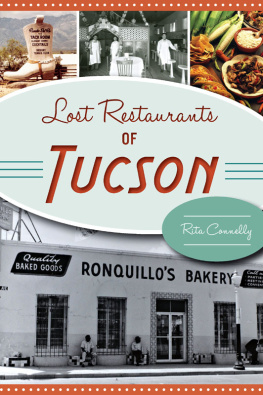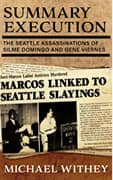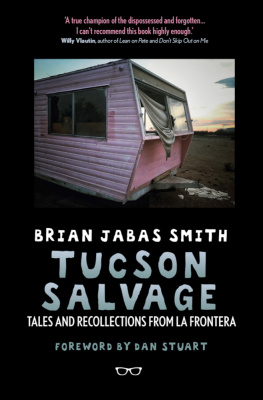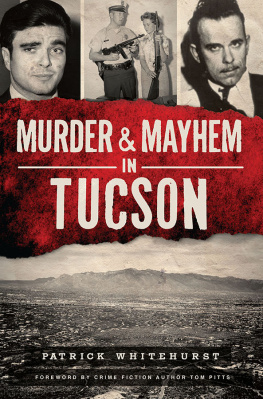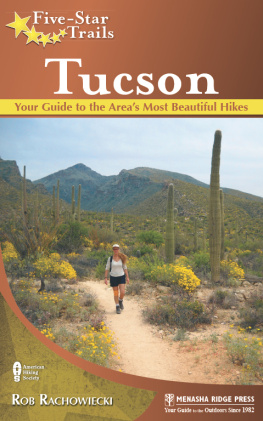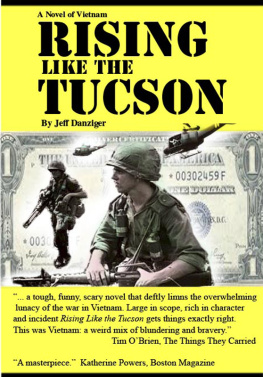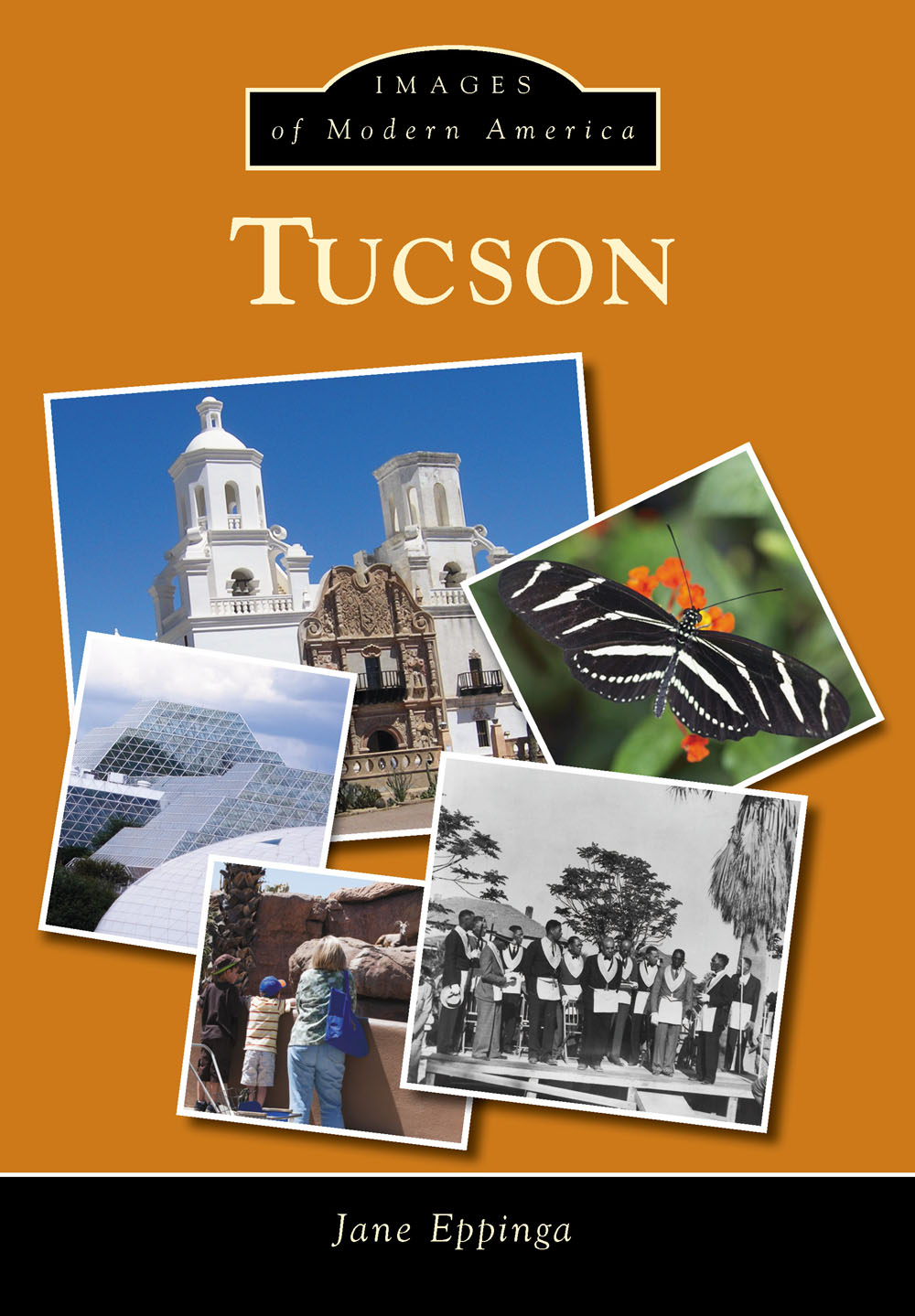
IMAGES
of Modern America
TUCSON
On the Front Cover: Clockwise from top left:
Mission San Xavier del Bac, serving worshippers for centuries (Authors collection; see ).
On the Back Cover: From left to right:
Franklin Car Museum, a treasure trove of vintage automobiles (Courtesy of Franklin Car Museum; see ).
IMAGES
of Modern America
TUCSON
Jane Eppinga

Copyright 2015 by Jane Eppinga
ISBN 978-1-4671-3364-7
Ebook ISBN 9781439652916
Published by Arcadia Publishing
Charleston, South Carolina
Library of Congress Control Number: 2015931558
For all general information, please contact Arcadia Publishing:
Telephone 843-853-2070
Fax 843-853-0044
E-mail
For customer service and orders:
Toll-Free 1-888-313-2665
Visit us on the Internet at www.arcadiapublishing.com

Daniela Lopez, a third grader from Manzo School, is holding quince from Tucsons Mission Garden. (Courtesy of the Dena Cowan Mission Garden.)
CONTENTS
ACKNOWLEDGMENTS
The work of creating a book is never entirely the work of one person, and so it is with Images of Modern America: Tucson. Now is the time to round up the individuals and organizations that have generously helped the author. These include Ace Hardware, Arizona Historical Society Library, Arizona Inn, the Library of Congress, Reid Park Zoo, Tucson Visitors and Convention Bureau, Madaras Gallery, Tucson Museum of Art, University of Arizona Museum of Art, University of Arizona Athletics, Franklin Car Museum, Arizona-Sonora Desert Museum, International Wildlife Museum, Old Tucson Movie Studio, Old Pueblo Trolley Photo Collection, Medicine Man Gallery, Westin La Paloma, Robert Vint Architectural Firm, Mountain Oyster Club, Saguaro National Park, Wat Buddhist Temple, and University of Arizona Pharmacy. Individuals include Bernard Fontana, Bob Gosell, Hannah Moore, Scott Price, and Carolyn OBagy Davis. No book sees the light of day without a publisher and an acquisitions editor such as Arcadia Publishing, Alyssa Jones, and the Arcadia staff. Unless otherwise noted, images are from the authors collection.
INTRODUCTION
Tucson grew from a collection of mud huts to a thriving metropolis. Today, E. Ross Browne would not say that Tucson was a place of resort for traders, speculators, gamblers, horse-thieves, murderers and vagrant politicians. From 1867 to 1877, Tucson served as the capital of the Arizona Territory. Tucson incorporated in 1877, making it the oldest incorporated city in Arizona. Located in the Sonoran Desert, it is surrounded by mountains. The city is blessed with 360 sunny days a year, and it must be admitted that it gets a tad warmish in the summer. Local industries include electronics and missile production. Tucson is the seat of Pima County, and its metropolitan area supports more than one million residents. So, hop onto the brand-new streetcars or take a walk down Tucsons Turquoise Trail and learn about this fascinating city.
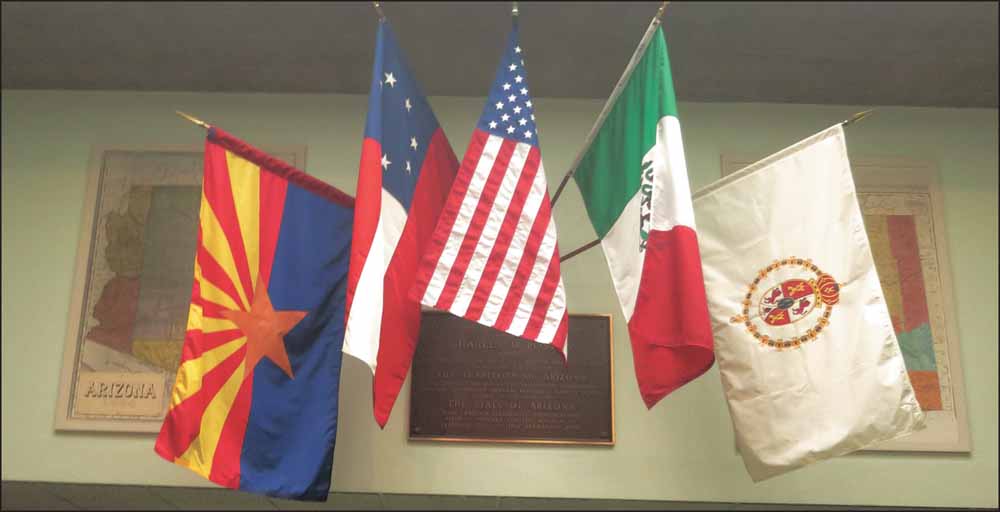
The five flags that have flown over Tucson include those of the state of Arizona, the Confederate States of America, the United States, Mexico, and Spain. On the walled presidio of San Agustn de Tucson flew the flag of Spain. When Mexico secured independence from Spain in 1821, Tucson flew the flag of Mexico. In 1853, Tucson became part of the Arizona Territory and the United States through the Gadsden Purchase, and a flag with 29 stars was raised over Tucson. In February 1862, Tucson was occupied by Confederate forces flying the Confederate flag until May 20, when it was recaptured by Union forces. On February 14, 1912, Tucson became part of the new state of Arizona.
One
TUCSON WALKS THE
TURQUOISE TRAIL
Downtown Tucsons historical sites may be visited by walking its 2.5-mile Turquoise Trail, also known as the Presidio Trail. The Turquoise Trail, modeled after Bostons famous Freedom Trail, guides residents and visitors to 23 of the citys historical landmarks. The sites, marked with descriptive plaques, form a loop around downtown Tucson, from the Presidio Wall south to Carrillo Elementary School, northeast to the Hotel Congress and northwest to finish at the Telles Block, which is now Old Town Artisans. The sites are connected by a turquoise-colored line that is being painted on the sidewalk for most of the length of the trail. Two women responsible for this project are Gayle Hartmann and Marjorie Cunningham. A brochure marking the trails path and explaining its sites and their significance is available at the Metropolitan Tucson Convention and Visitors Bureau and at hotels and restaurants. The following images are a small sampling of what one will see walking the Turquoise Trail.
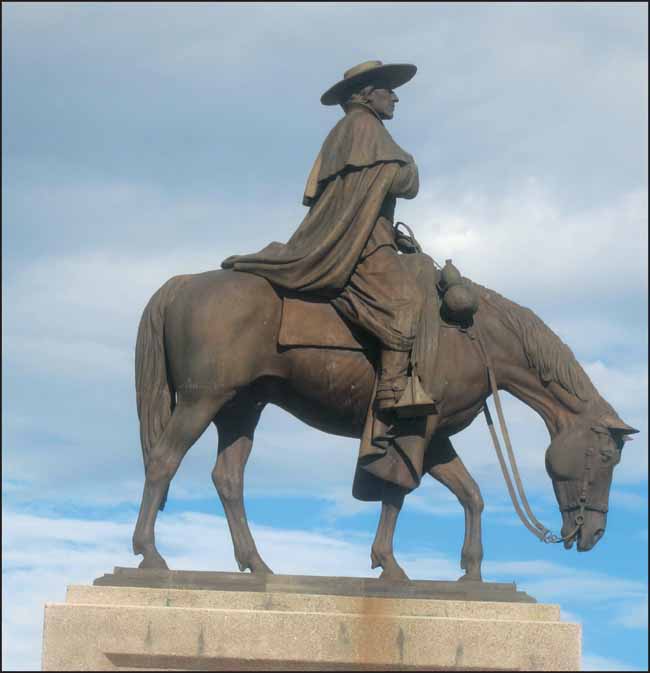
Fr. Eusebio Francisco Kino founded 21 missions in what is now northern Sonora, Mexico, and southern Arizona in the late 1600s and early 1700s. The missions in Arizona include San Xavier, Tumaccori, and Guevavi. His equestrian statues are located at Fifteenth Street and Kino Parkway in Tucson, Magdalena, Sonora, where he is buried, and his native Segno, Italy. Kino was 65 when he died in Magdalena, and his bones are on display in the courtyard of the church.

Saguaro National Park is home to the giant saguaro cactus, but it also hosts a variety of desert plants as well as quail, owls, and javelinas. Saguaro National Monument was created by outgoing president Herbert Hoover in 1933. On October 14, 1994, Pres. William Jefferson Clinton signed legislation enlarging Saguaros boundaries and making Saguaro National Park Americas 52nd national park. (Courtesy of Saguaro National Park.)
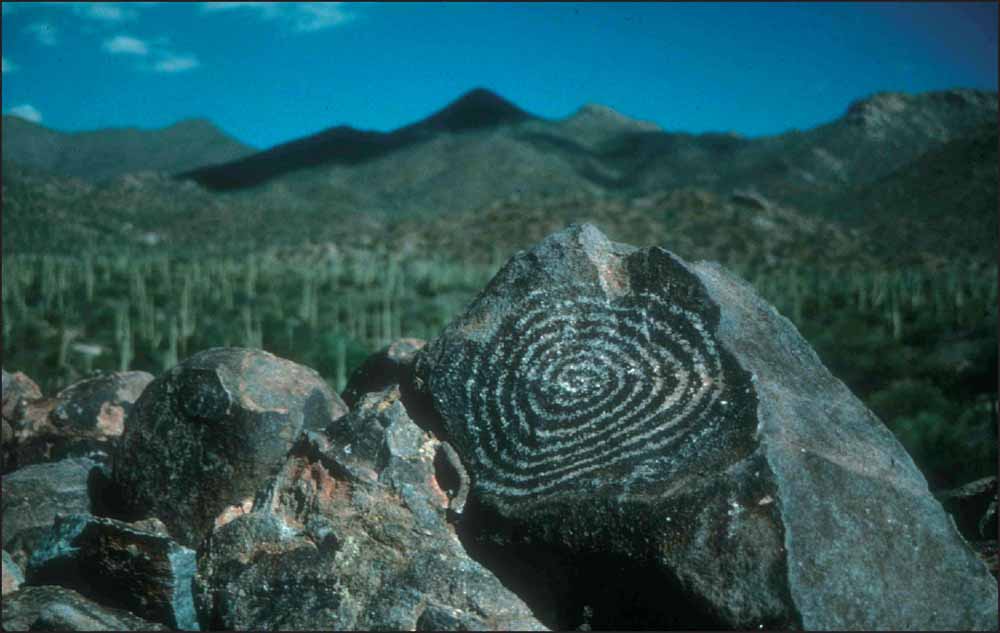
Pictured here are Saguaro National Park petroglyphs. Southwestern rock art, which predates written history, originated hundreds or perhaps thousands of years ago with the Hohokam people, who lived in the area that is now Tucson. These mysterious images from the past may have religious or ceremonial significance. They also may be solstice markers, clan symbols, or decorative motifs. (Both, courtesy of Saguaro National Park.)
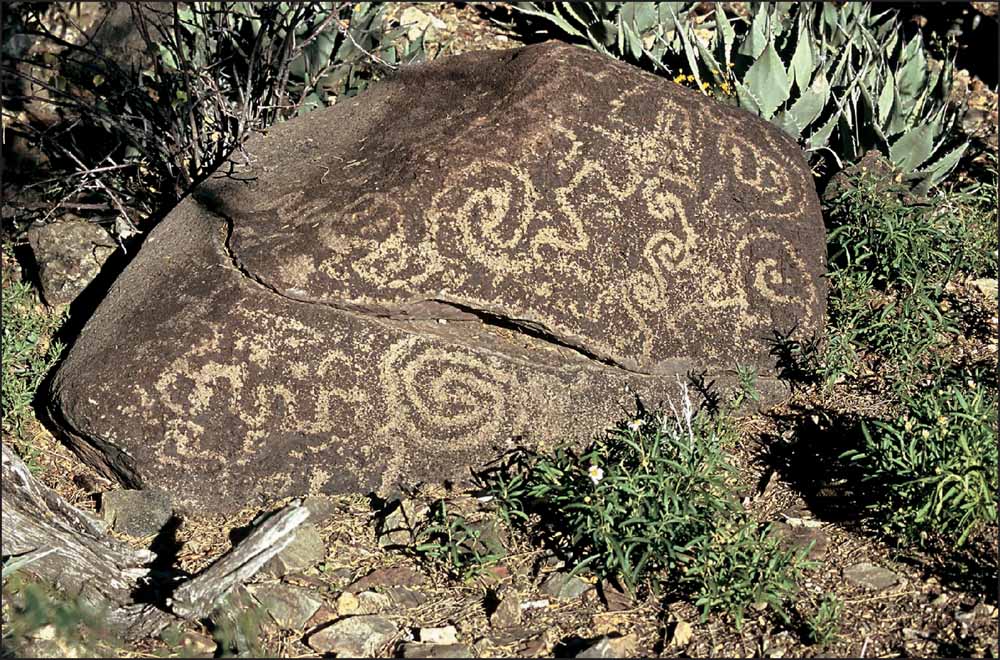
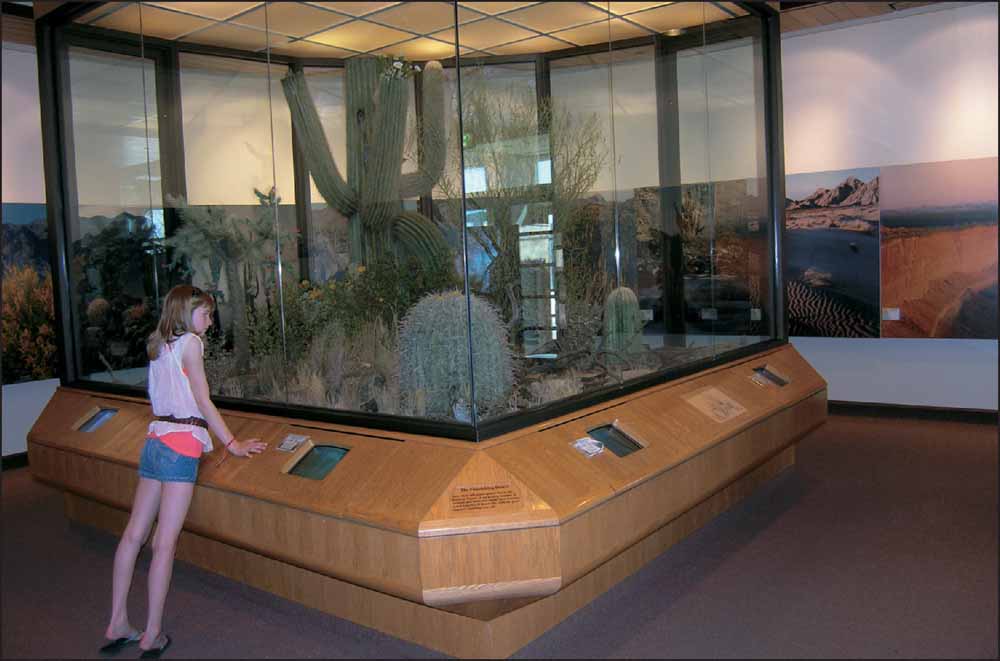
Saguaro National Park has two visitor centers. Both are open every day all year-round, except Christmas. This visitor center has spectacular mountain views and saguaros. Both visitor centers have cultural and natural-history exhibits of the Sonoran Desert along with a program called Voices of the Desert, giving a Native American perspective of the Sonoran Desert. Both centers have great bookstores run by the Western National Parks Association. (Below, courtesy of Saguaro National Park.)
Next page



